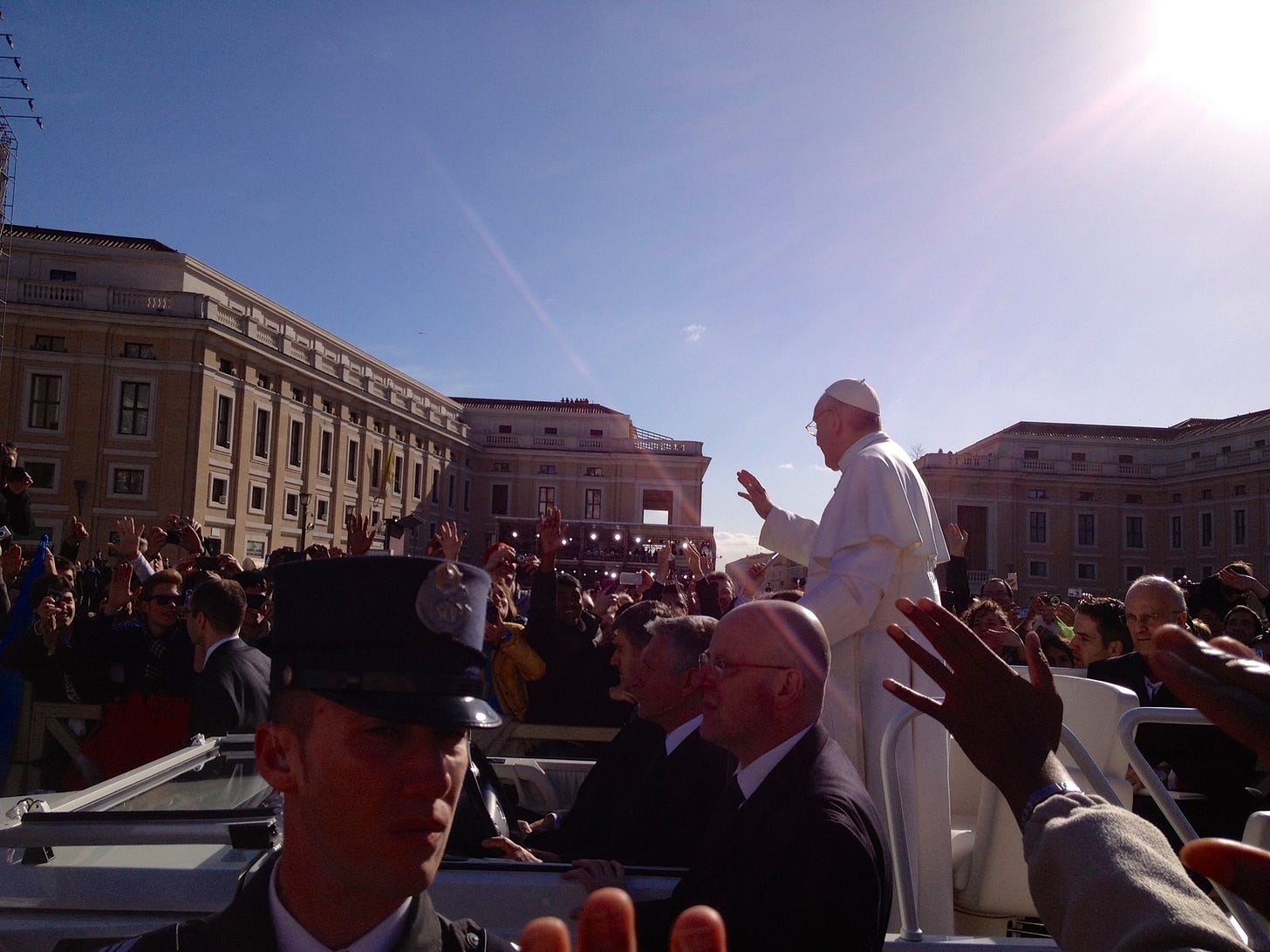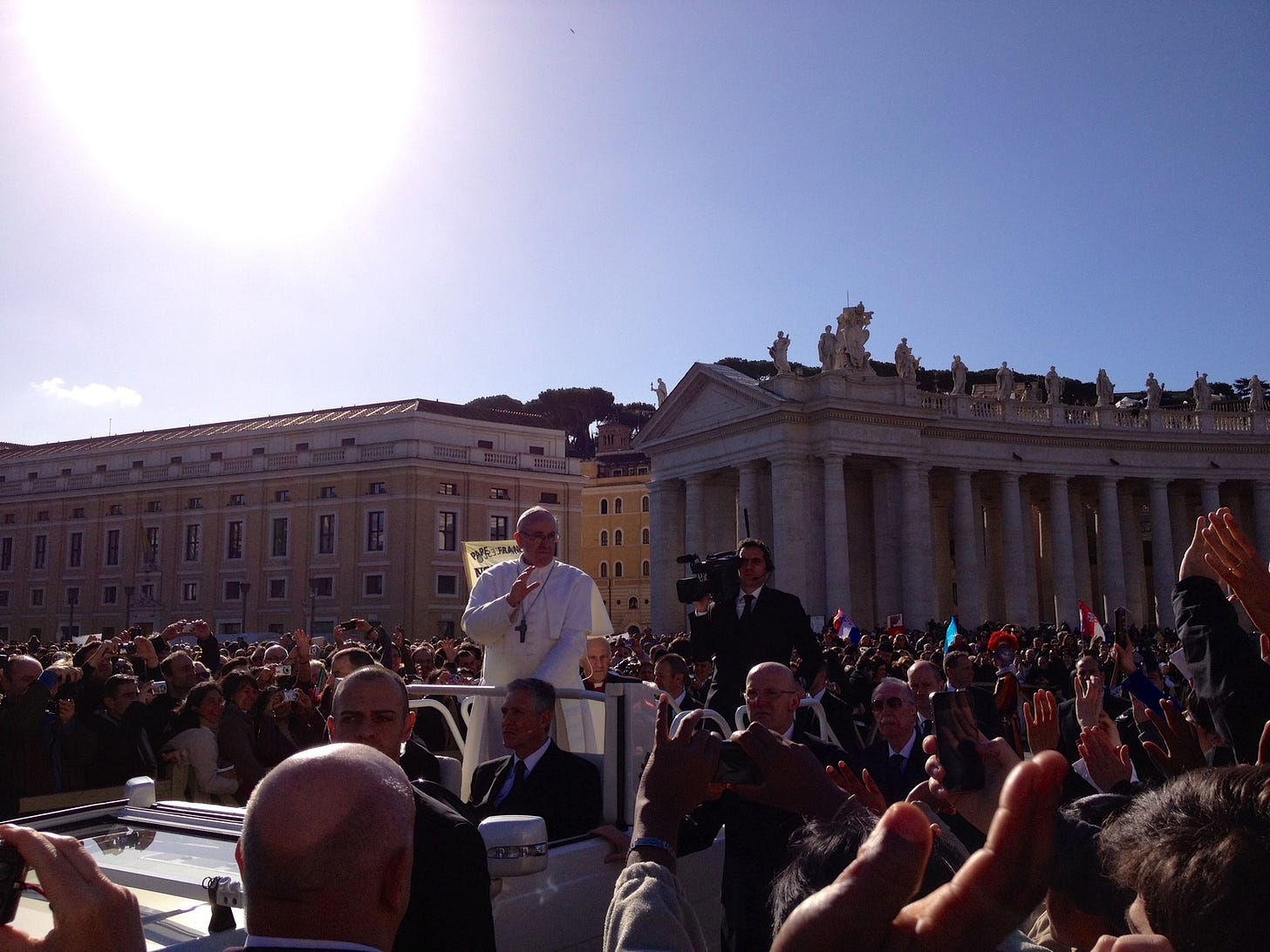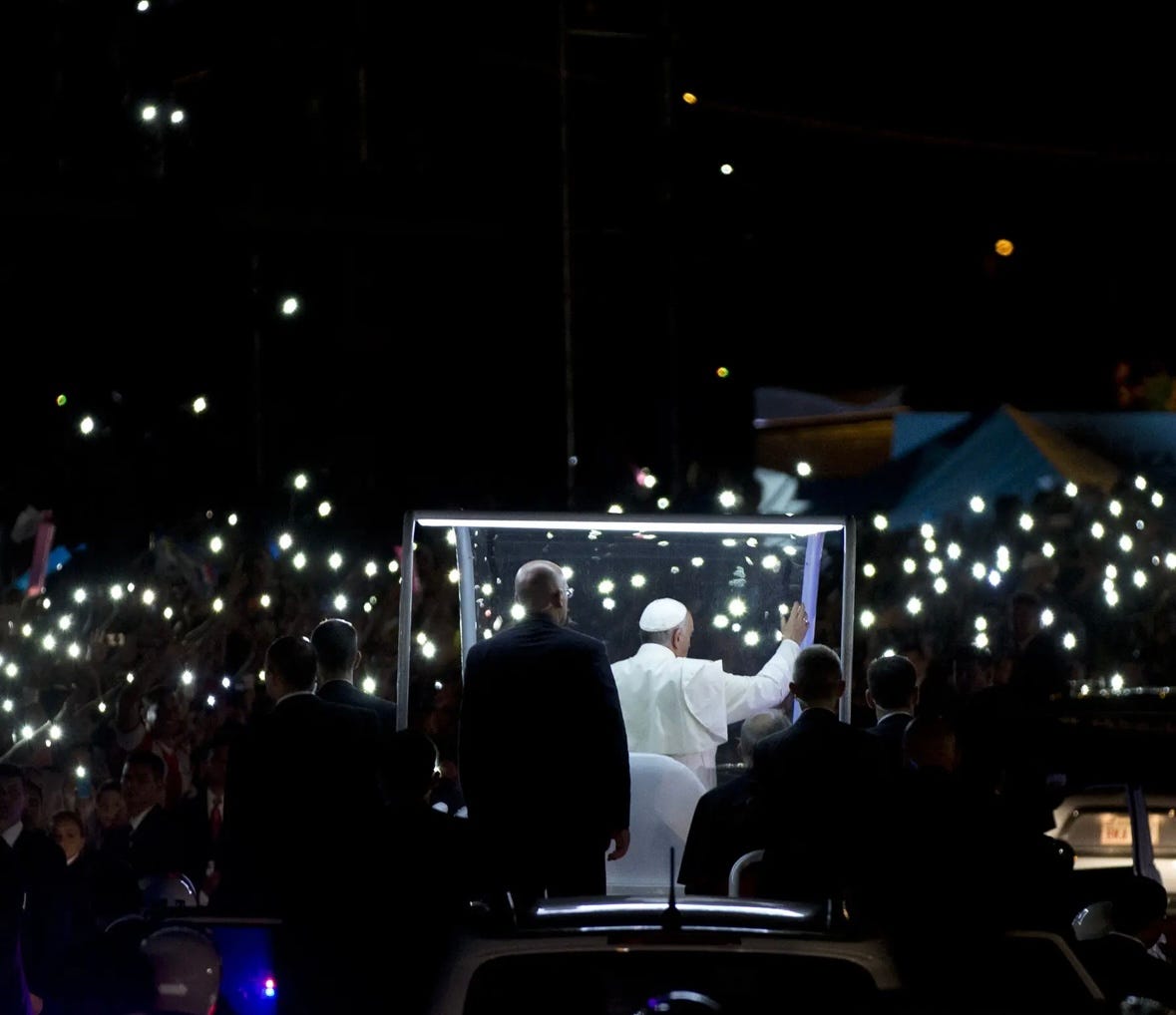When Cardinal Bergoglio became Pope Francis
He was somewhat of a surprise choice to succeed Pope Benedict XVI in 2013. Even he seemed surprised.
Last Sunday, Easter, I happened to see a photo of Pope Francis meeting with Vice President J.D. Vance, and images of him that same day being driven around St. Peter’s Square in the Popemobile. He was seated, slumped, waving weakly. I thought, man, he does not look good.
The next morning I awoke early. Out of habit, I reached for and looked at my phone. In my email inbox were a stream of bulletins from the news outlets I follow. All had the same message. The pope was dead.
Pope Francis in St. Peter’s Square. March 25, 2013
In March 2013, I was sent to Rome as part of a small army of ABC News correspondents, producers, camera crews, desk assistants, researchers and more to cover the conclave of cardinals to elect a successor to Pope Benedict XVI after he unexpectedly stepped down.
The conclave began March 11th, a Monday. Two giant monitors near the Vatican showed the chimney of the Sistine Chapel where the cardinals were meeting. Several times, black smoke was shown emitting. The dark fumes of the burned ballots meant no one had gotten the necessary two-thirds majority needed to become the new pope.
The next night, it rained. The crowd in St. Peter’s Square thinned. But then came the image of white smoke from the chimney. This was it. There was a new pope. I left the ABC News workspace near the Vatican to see. People were pouring in from all directions. I saw a nun - she was old and hobbled -- running as fast as she could.
We gathered outside St. Peter's Basilica and waited. A door opened and a stream of cardinals came flowing out, arraying themselves in a long line of red. All eyes were locked on that balcony. Someone announced "habemus papam." Latin for "we have a pope." We watched. A man emerged from the door. The Argentinian cardinal, Jorge Bergoglio. He had taken the name Francesco. Francis, in English. The crowd cheered.
The new pope addressed the crowd.
"Buonasera," he said. Good evening. The crowd cheered louder.
In Italian, he said, "You know the task of the conclave was to give Rome a bishop. My brothers went to the end of the earth to get him."
He spoke for a while. He asked the crowd to pray with him and for him, then finished, "Brothers and sisters, thank you for your welcome. Tomorrow, I will pray that Mary safeguard Rome. Good night. Good rest."
March 25, 2013
The next time I saw the new pope was the following Sunday. The new pope boarded the Popemobile for a ceremonial spin around St. Peter's Square. This day was sunny and pleasant. The square was once again packed with tens of thousands of people. They were excited and smiling. Some held rosaries. A week ago, this man was probably unknown to almost all of them. Now they were prepared to shower him with genuine affection, even love.
The open vehicle moved slowly through the square, cleaving its way through the surging crowd in a long arc. The pope, garbed in white robes, stood, waving, reaching out, touching people, kissing babies. The Popemobile was heading my way, inching closer. The crowd was surging and screaming. I watched carefully, imprinting this image in my mind and memory. When the vehicle was about 15 feet away, I saw the pope make eye contact with someone to the left of me. He appeared to me bemused, even abashed by all the commotion. To whoever the person was who he was looking at, he smiled and then did something odd. He cocked his head ever so slightly to the side and kind of shrugged, as if to say, All this is for me?
The Calling of St. Matthew by Caravaggio. Photo credit: profzucker
Pope Francis's favorite painting was said to be "The Calling of St. Matthew," by Caravaggio. Painted in 1600, it depicts several people in a room. Matthew is third from left, wearing a black velvet hat. Jesus is standing in the doorway on the right of the image, pointing at Matthew, who points to his own chest with an expression that seems to say: "Who? Me?"
"It is the gesture of Matthew that strikes me," Francis said shortly after he became pope. "This is what I said when they asked me if I would accept my election as pontiff."
I tend to think of charismatic people as extroverts - assertive, commanding figures. And that's certainly true. But there is charisma too - rarer - in humility. That was Pope Francis. It was there at the beginning. It was there at the end.
"I remember the people. Thousands of them, sometimes hundreds of thousands, pressed together in ancient stadiums, lining the streets of one place or another," Jim Yardley, who, as Rome bureau chief for the New York Times, covered and traveled with the pope extensively, wrote after Pope Francis died. "Any pope can draw a crowd, but Francis had something intangible."
Pope Francis in Asuncion, Paraguay, 2015. photo credit: Natacha Pisarenko, Associated Press
Months after Francis became pope, I was walked through Central Park and came out into the Upper East Side of Manhattan. Fifth Avenue was lined with police barricades and police officers. I wondered why. Then I heard the commotion of an approaching motorcade. The train of vehicles came down Fifth Avenue and people were cheering and waving wildly. After the lead vehicles came a black limousine. I peered in through the darkened windows and saw Pope Francis, a hand up to salute the cheering bystanders. The caravan passed and then disappeared down Fifth Avenue. I never saw the pope again.








Quite the reminiscence. It's going to be strange this time around -- not being on the desk during the conclave. It's ok though -- retirement is good. Hope you're well, Ron.
A nice remembrance! Watching part of the Pope’s funeral from Paris this morning, it was odd to hear commentators holding forth in French, as the Mass was presented in Latin and Italian. But across all the languages and nationalities, a powerful
wave of collective affection for Pope Francis shown through. He made the world a better place and will be missed.